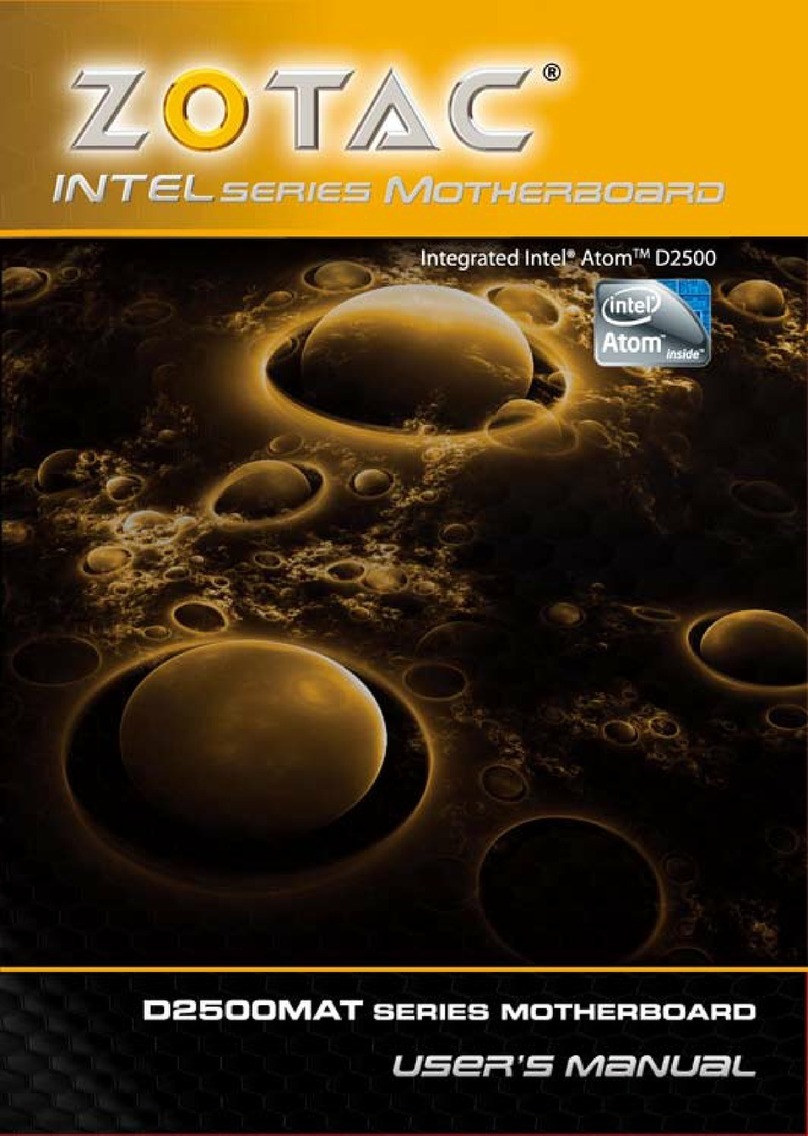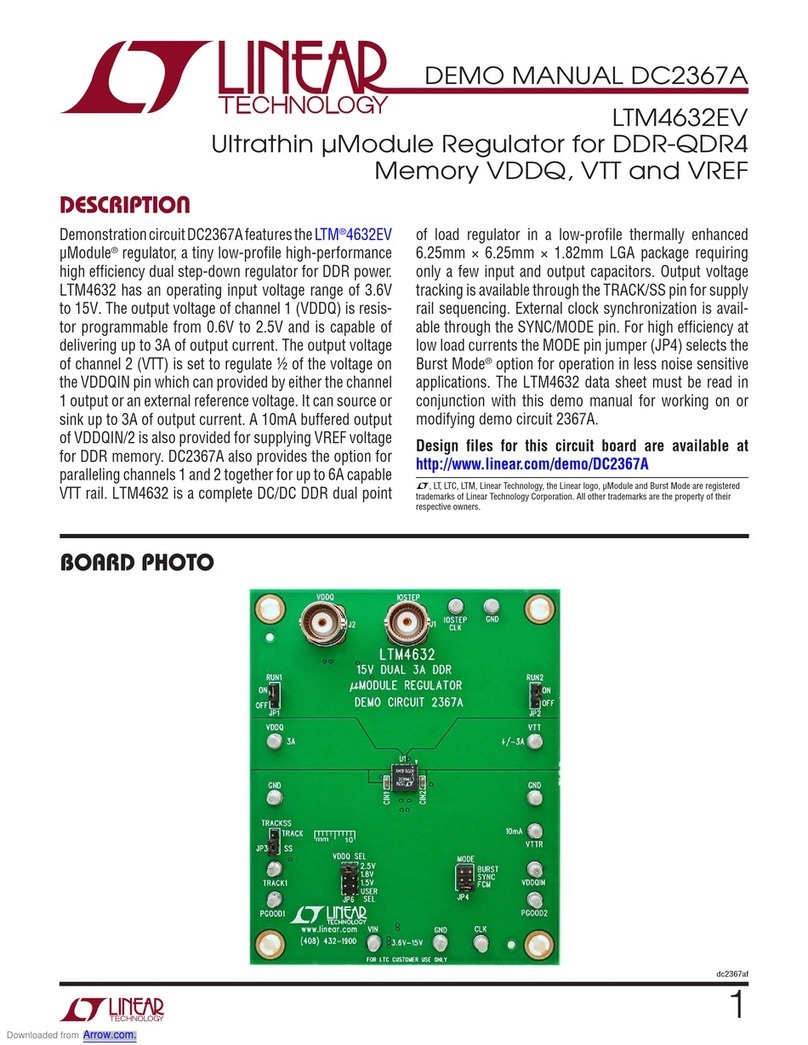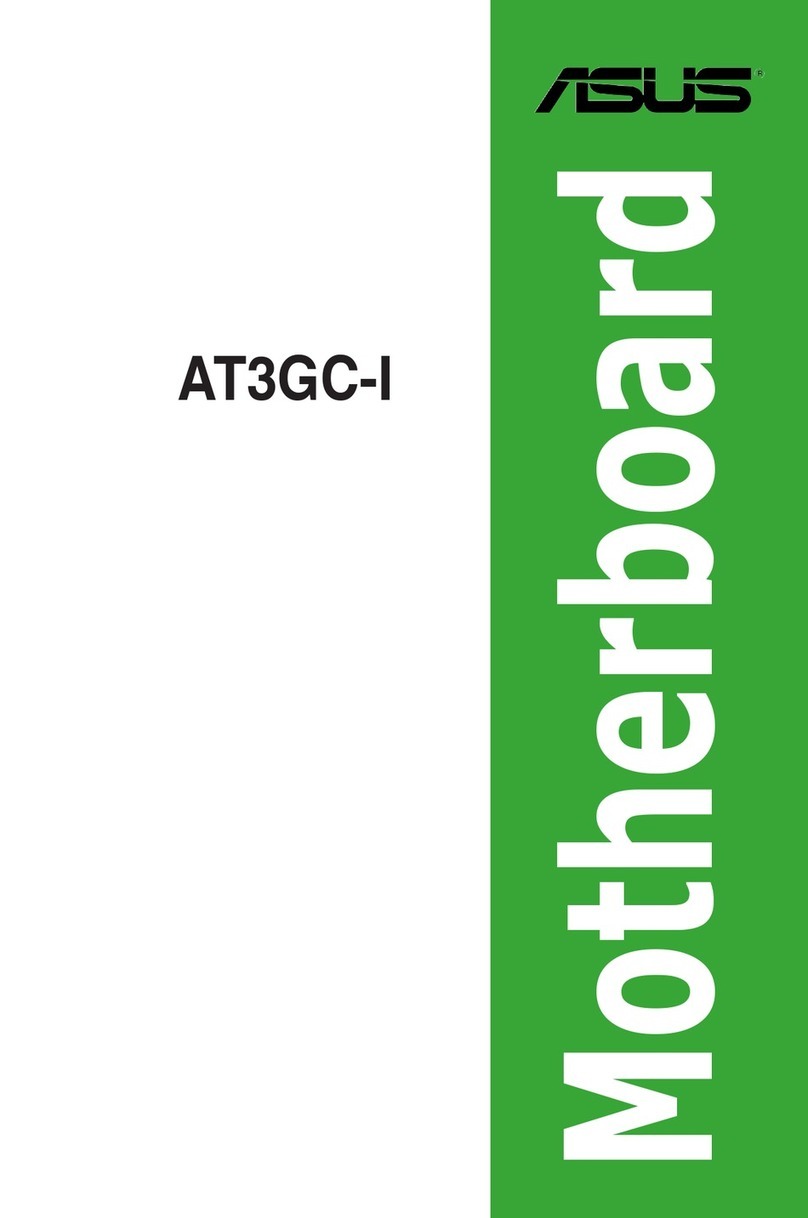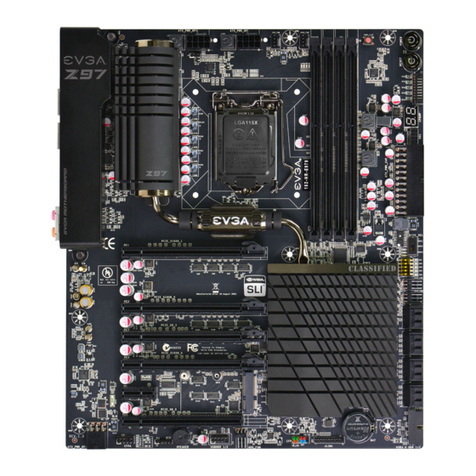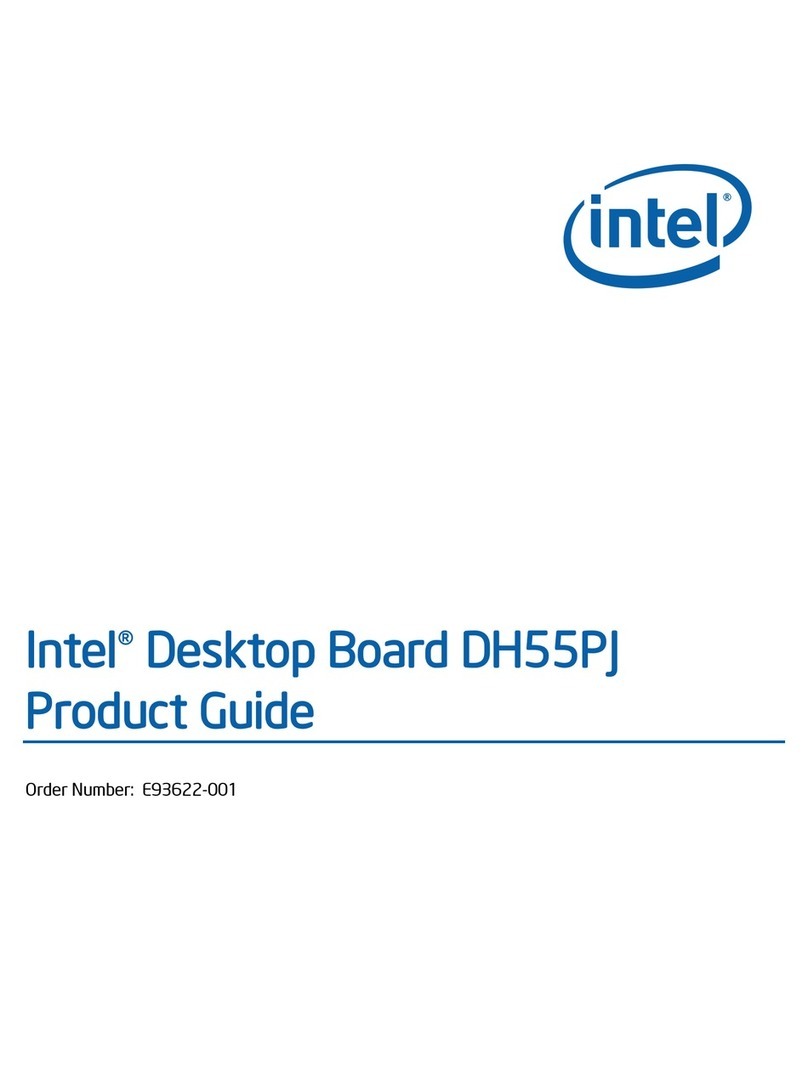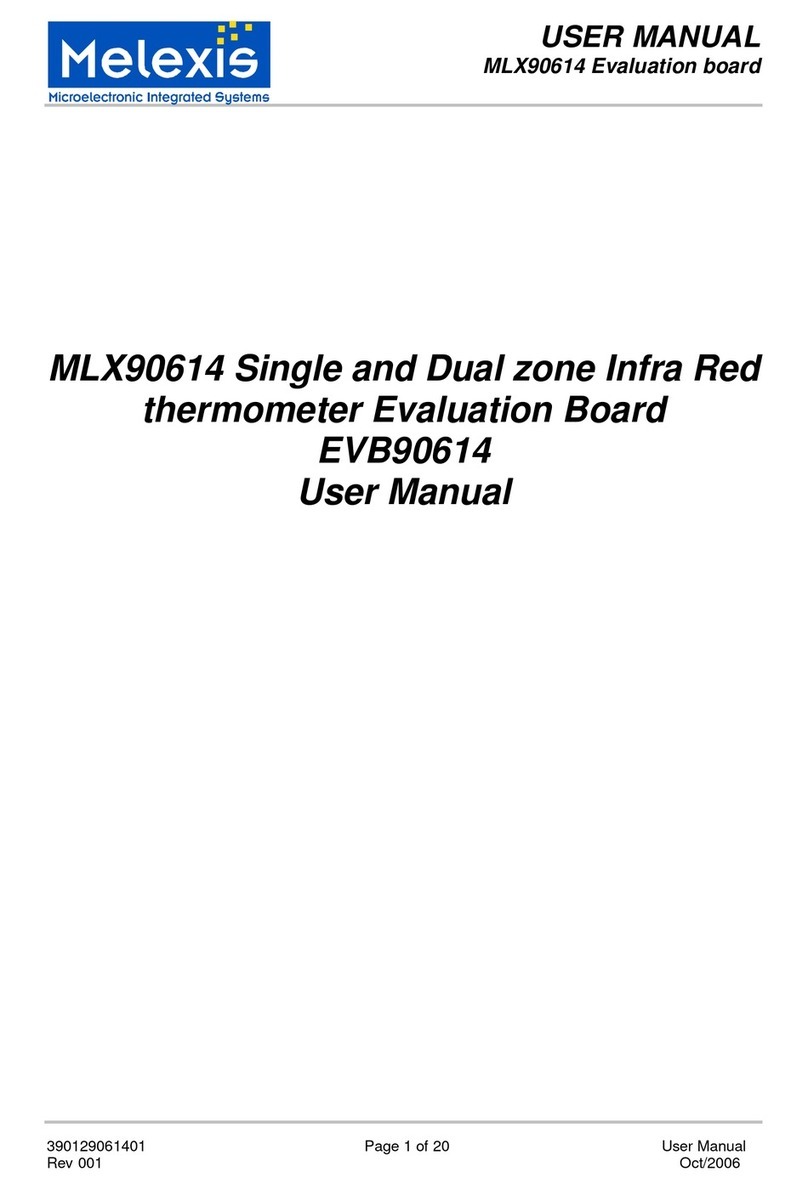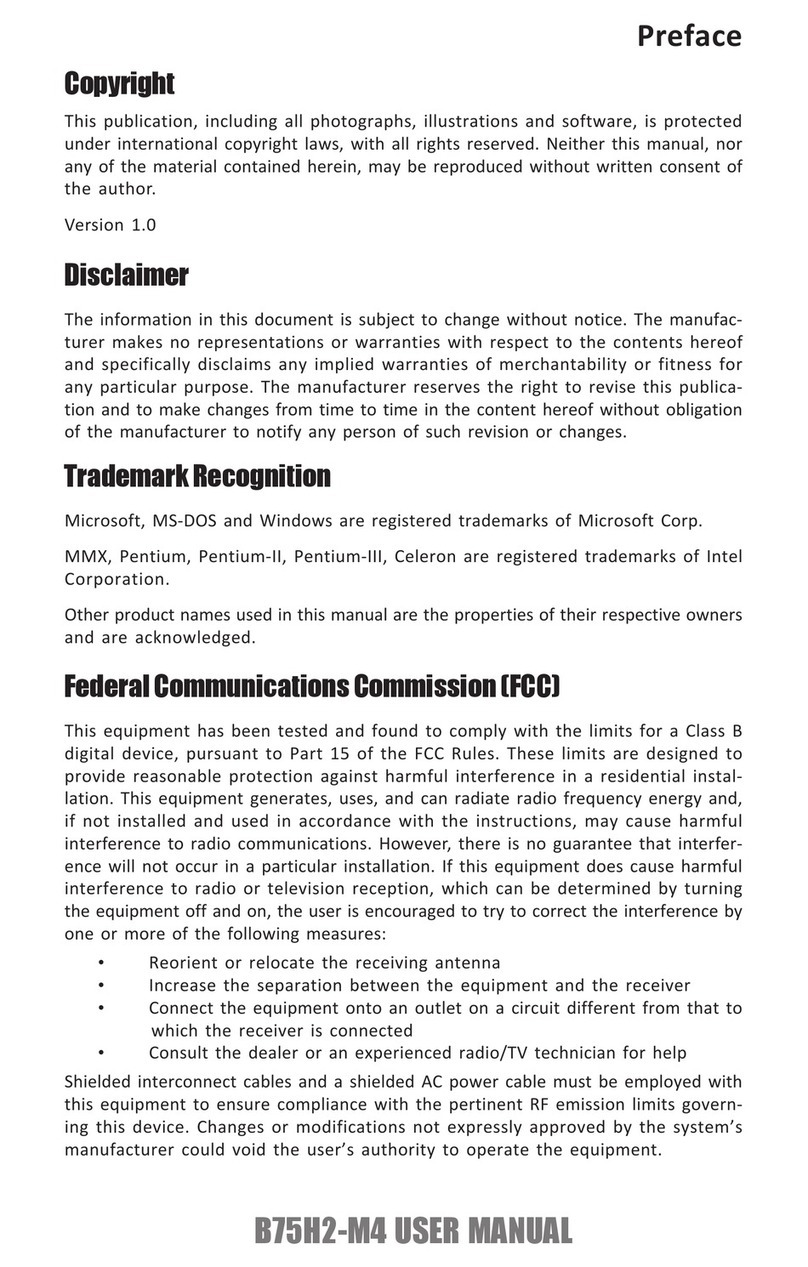Moog PRIZM 201000 Series User manual

Moog Components Group Prizm Fiber Optic USB 1.1 Link Manual February 1 , 2009
Page 1 of 9
Prizm Fiber Optic USB 1.1 Link
201000-xxx and 201030-xxx
Users’ Man al
And
Tro bleshooting G ide
(Rev. C)
Febr ary 17, 2009
Moog Components Group
Springfield Operations
750 West Sproul Road
Springfield, PA 190 4
E-Mail: mcg@moog.com URL: www.moog.com/components
Tel: 610-328-4000 Fax 610-605-6216
24/ Technical Customer Support Hotline: 610-605-6101

Moog Components Group Prizm Fiber Optic USB 1.1 Link Manual February 1 , 2009
Page 2 of 9
1
Prizm Fiber Optic USB 1.1 Link (P/N – 201000-xxx and 201030-xxx) Overview .........................................................3
1.1
Manual Revision History: ........................................................................................................................ 3
1.2
Prizm Fiber Optic USB 1.1 Link Revision History: .................................................................................. 3
1.3
Prizm Fiber Optic USB 1.1 Link Dash (-) Number Definitions: ............................................................. 4
1.4
Prizm Fiber Optic USB 1.1 Link Specifications:..................................................................................... 4
1.5
Operation ................................................................................................................................................. 5
1.5.1
Prizm Fiber Optic USB 1.1 Link Indicators, Controls and Connectors: ..........................................................5
1.5.2
Prizm Fiber Optic USB 1.1 Link LED Behavior During Operation.................................................................5
1.6
Prizm Fiber Optic USB 1.1 Link Adjustment and Troubleshooting........................................................ 6
1.6.1
POWER SECTION TESTING: .......................................................................................................................6
1.6.2
OPTICAL SECTION TESTING:.....................................................................................................................
1.6.3
DATA SECTION TESTING: ..........................................................................................................................
2
Appendix A: Optical Considerations ...............................................................................................................................8
2.1
Prizm Fiber Optic USB 1.1 Link Singlemode, Single Fiber Operation ................................................... 8
3
Appendix B. Prizm Fiber Optic USB 1.1 Link Installation and Checkout.......................................................................9
3.1
General Prizm Fiber Optic USB 1.1 Link Installation Notes................................................................... 9
3.2
Prizm Fiber Optic USB 1.1 Link Installation Checkout Procedure ......................................................... 9
3.3
Prizm Fiber Optic USB 1.1 Link System Installation Checkout Procedure............................................. 9

Moog Components Group Prizm Fiber Optic USB 1.1 Link Manual February 1 , 2009
Page 3 of 9
1 Prizm Fiber Optic USB 1.1 Link (P/N – 201000-xxx and 201030-
xxx) Overview
The Prizm Fiber Optic USB 1.1 Link provides a transparent USB 1.1 link over single mode fiber at
distances up to 10 kilometers. The Link consists of two boards, a Local Host and a Remote Hub. Both
boards may be mounted on 3U VME plates and powered from a VME backplane, or alternatively they
may be independently powered via a 2-pin connector.
The Local Host board connects to a standard USB 1.1 Host via an industry standard USB cable. A
single mode fiber optic transceiver on the board provides an SC connection to the Remote Hub end of the
USB Link.
The Remote Hub board carries four USB 1.1 peripheral ports that may be used to interface to various
USB 1.1 peripherals. A second, local USB hub may also be plugged into any of the four provided ports
to allow for additional connectivity. A single mode fiber optic transceiver on the board provides an SC
connection to the Local Host end of the Link.
The Link consists of two PC-104 based cards, (3.55” wide, 3. 5” long, .8” high), which have
standard PC-104 mounting holes. Both cards can provide pass through of all PC-104 backplane signals
and may be used in PC-104 based systems or they may be mounted separately and supplied with power
through a 2-pin terminal connector.
1.1 Manual Revision History:
The manual has gone through the following revisions:
Rev A Describes Original Production Units
Rev B Updated board dash numbers
Rev C Updated contact information to reflect Moog Components Group.
1.2 Prizm Fiber Optic USB 1.1 ink Revision History:
The Prizm Fiber Optic USB 1.1 Link (201000-xxx and 201030-xxx) has gone through the following
printed circuit board (PCB) and Assembly revisions:
PCB Revision A/Assembly Revision A Original Boards

Moog Components Group Prizm Fiber Optic USB 1.1 Link Manual February 1 , 2009
Page 4 of 9
1.3 Prizm Fiber Optic USB 1.1 ink Dash (-) Number Definitions:
Both the Local Host and the Remote Hub boards have dash numbers appended to the part number.
This dash number identifies the specific board configurations:
201000-001 Local Host Board; +3.3V optical transceiver (1310nm transmitter) singlemode fiber
only, 3U rack mountable version.
201000-002 Local Host Board; +3.3V optical transceiver (1310nm transmitter) singlemode fiber
only, OEM board version.
201030-001 Remote Hub Board; +3.3V optical transceiver (1550nm transmitter) singlemode fiber
only, 3U rack mountable version.
201030-002 Remote Hub Board; +3.3V optical transceiver (1550nm transmitter) singlemode fiber
only, OEM board version.
1.4 Prizm Fiber Optic USB 1.1 ink Specifications:
Optical Link Rate: 155Mbps bi-directional
USB Data Rate: USB 1.1 compliant (12 Mbps)
Fiber Option: Singlemode
Laser Wavelengths: 1310 and 1550 nanometers
Optical Output Levels: -15dBm transmitter power output, MIN.
Receiver Sensitivity: -32dBm receiver sensitivity, MIN.
Receiver Saturation: -8dBm,
Optical Budget: -1 dB, MIN.
Misc.
Operating Temperature: 0 - 65° C
Storage Temperature: -40 - +65° C
Dimensions: 3.55 in x 3. 5 in x 0.80 in
(90.1 mm x 95.885 mm x 20.32 mm)
Power Requirements: Host: +5 Volts at .6 Amps (3.0 Watts), maximum
Remote: +5 Volts at 1.5 Amps ( .5 Watts), maximum

Moog Components Group Prizm Fiber Optic USB 1.1 Link Manual February 1 , 2009
Page 5 of 9
1.5 Operation
1.5.1 Prizm Fiber Optic USB 1.1 Link Indicators, Controls and Connectors:
LEDS: There are a number of LEDs on both the Local Host and the Remote Hub boards. In addition to
power indicators, there are status LEDs to indicate valid data links, as well as the connection of valid
USB hosts and peripherals. The operation of these LEDs is detailed in Section 1.4.3.
SWITCHES: There are no user configurable switches on either board in the Prizm Fiber Optic USB 1.1
Link.
JUMPERS: There are no user configurable jumpers on either board of the Prizm Fiber Optic USB 1.1
Link.
CONNECTORS: The connectors on the Prizm Fiber Optic USB 1.1 Link are as follows:
Host Board (201000-xxx): J1: USB Type B Host Connector
J2: +5VDC 2-Pin Power Connector
Remote Hub Board (201030-xxx): J2: +5VDC 2-Pin Power Connector
J8: USB Type A Peripheral Connector
J9: USB Type A Peripheral Connector
J10: USB Type A Peripheral Connector
J11: USB Type A Peripheral Connector
1.5.2 Prizm Fiber Optic USB 1.1 Link LED Behavior D ring Operation
This section details the expected operation of the various LED’s on the USB Local Host and Remote
Hub boards during operation. Note that there are separate +5 and +3.3VDC LED’s on each of the
motherboards as well as each daughterboard. All of these LED’s must be illuminated to achieve
correct operation of the link.
Local Host Board (201000-xxx):
+5V Power Motherboard (D4) - Lit green
+3.3V Power Motherboard (D5) - Lit green
+5V Power Daughterboard (D ) - Lit red
+3.3V Power Daughterboard (D8) - Lit red
Fiber Link - Tied to signal detect of the optical module. Lit
green when there is sufficient optical power at the
receiver.
USB Link - Lit green when Fiber Link is illuminated and
communication is established with the Remote
board.
Host Present - Lit green when USB Link is illuminated and a
valid USB Host is plugged into J1.

Moog Components Group Prizm Fiber Optic USB 1.1 Link Manual February 1 , 2009
Page 6 of 9
Remote Hub Board (201030-xxx):
+5V Power Motherboard (D4) - Lit green
+3.3V Power Motherboard (D5) - Lit green
+5V Power Daughterboard (D ) - Lit red
+3.3V Power Daughterboard (D8) - Lit red
Fiber Link - Tied to signal detect of the optical module. Lit
green when there is sufficient optical power at the
receiver.
USB Link - Lit green when communication is established
with the Host board and a valid USB host is
connected to J1 of the Host Board.
Port 1 - Lit green when a valid USB 1.1 peripheral is
plugged into J9 and USB Link is illuminated.
Port 2 - Lit green when a valid USB 1.1 peripheral is
plugged into J8 and USB Link is illuminated.
Port 3 - Lit green when a valid USB 1.1 peripheral is
plugged into J10 and USB Link is illuminated.
Port 4 - Lit green when a valid USB 1.1 peripheral is
plugged into J11 and USB Link is illuminated.
1.6 Prizm Fiber Optic USB 1.1 ink Adjustment and Troubleshooting
This section is meant to lend guidance while troubleshooting any problems that arise during operation
of either the Local Host or Remote Hub boards.
1.6.1 POWER SECTION TESTING:
If both the +5V Power LED and the +3.3V Power LED are out on the motherboard:
• Check for reversed polarity of power supply leads.
• Check for proper supply voltage (+5VDC min)
• Check for shorted power supply.
If only the +5V Power LED is out on the motherboard:
• Verify +5V DC is present at the source.
• If +5V is not available replace the board with a spare.
• If +5V is available check the +5V LED.
If only the +3.3V Power LED is out on the motherboard:
• Verify +5VDC across D6 (replace board if +5VDC is not available)
• Verify +3.3VDC across C14.
• If +3.3V is not available replace the board with a spare.
• If +3.3V is available check the +3.3V LED.
If both the +5V Power LED and the +3.3V Power LED are out on the daughterboard:
• Verify that the daughterboard is seated properly on the motherboard’s data headers.

Moog Components Group Prizm Fiber Optic USB 1.1 Link Manual February 1 , 2009
Page of 9
1.6.2 OPTICAL SECTION TESTING:
If either Fiber Link light fails to illuminate after power has been applied to both boards and a fiber
optic tether is placed between the Local Host and Remote Hub units, there is a problem with the
optical link and one or more of the following conditions may be present.
• The fiber is broken or damaged.
• One of the optical transceiver modules is defective.
• Excessive light loss (low received optical power) is being experienced.
• The Prizm Fiber Optic USB 1.1 Link (not the optical transceiver module) is malfunctioning.
• There is not enough attenuation in the optical link and the receiver is saturating.
To determine if the fiber is broken, a laser module is out, or the board is malfunctioning, first:
• Check that the optical fiber cable is straight at connectors on board for minimum optic loss.
• Check the optical level with an optical power meter at each optical connection including any
external WDM’s or sliprings.
• If the above steps do not yield a solution, one or both boards may be malfunctioning. Try
replacing each board with a spare unit.
1.6.3 DATA SECTION TESTING:
If USB 1.1 data cannot be transmitted and received between the host and peripherals and the optic link
has been verified, there is a problem with one or both Prizm boards. Based on the LEDs present on
both boards, investigate the following:
• If one or both of the Fiber Link LEDs is not illuminated, refer to Section 1.5.2.
•
••
• If the USB Link LEDs do not illuminate on both boards as described in Section 1.4.3, verify that a
USB 1.1 compliant Host and at least one USB 1.1 compliant peripheral are attached to their respective
ends of the link. Also verify that both Fiber Link LEDs are illuminated.
•
••
• If the Host Present LED does not illuminate, verify that a USB 1.1 compliant Host is connected to the
Local Host Board and that both Fiber Link and USB Link LEDs are illuminated.
•
••
• If a Port 1-4 LED does not illuminate when a valid USB 1.1 compliant peripheral is attached to the
corresponding port, verify that there is a valid USB 1.1 compliant host connected to the Local Host
Board and that both the Fiber Link and USB Link LEDs are illuminated.
•
••
• If all LEDs behave as expected, but data cannot be carried across the link, examine any device drivers
needed to correctly operate your USB device. Connect the USB peripheral directly to the Host device
and verify proper operation. Then, reinsert the Prism USB Link and assess the status of the system
again.

Moog Components Group Prizm Fiber Optic USB 1.1 Link Manual February 1 , 2009
Page 8 of 9
2 Appendix A: Optical Considerations
2.1 Prizm Fiber Optic USB 1.1 ink Singlemode, Single Fiber Operation
The Prizm Fiber Optic USB 1.1 Link is configured for use with only singlemode fiber optic cable in
the umbilical and with fiber optic rotary joints (i.e. slip rings) at this time. Multimode cable cannot be
used.
Single fiber operation is advantageous to maximize the number of spare fibers in an umbilical or slip ring.
Single fiber operation is implemented by using two different optical wavelengths to carry the uplink and
downlink data on the same fiber. The two wavelengths are filtered and combined by either an integral or
external WDM to remove any interference between the uplink and downlink signals. The laser
transmitters are fabricated with a specific wavelength (i.e. 1310 or 1550 nm) and transmit at these
wavelengths. The optical receivers are responsive to a wide range of wavelengths (typically 1000 to 2000
nm). The filtering function of the WDM removes the local transmitter’s wavelength (the undesired
signal) from the remote transmitter’s wavelength (the desired signal). The local transmitter’s signal can
feed back into the local receiver by the reflection from a poorly terminated fiber optic connector and
cause link errors.

Moog Components Group Prizm Fiber Optic USB 1.1 Link Manual February 1 , 2009
Page 9 of 9
3 Appendix B. Prizm Fiber Optic USB 1.1 Link Installation and
Checko t
3.1 General Prizm Fiber Optic USB 1.1 ink Installation Notes
NOTE: Please read all of this section prior to starting the installation process.
Test Equipment Required:
1. A USB host and at least one peripheral device.
2. Fluke
3. Oscilloscope
4. Fiber optic power meter (optional)
3.2
Prizm Fiber Optic USB 1.1 ink Installation Checkout Procedure
1. If installing the USB boards in standard 3U VME racks, obtain a Prizm supplied mounting plate
assembly and slide the cards into available backplane slots. If installing the USB boards in a PC-104
configuration, insert boards into stack as desired. If using a standalone configuration, use the supplied
mounting holes to secure the board in a system.
2. Supply power and ground to the boards using either a backplane or 16-gauge wire (or equivalent)
(+5VDC 1.5 Amps). Verify that the voltage is correct.
3. Connect a USB 1.1 compliant Host to the Local Host Board and at least one USB 1.1 compliant USB
peripheral to the Remote Hub Board.
3.3 Prizm Fiber Optic USB 1.1 ink System Installation Checkout
Procedure
1. Connect a singlemode optical fiber between the Local Host and the Remote Hub board.
2. Turn the power on to both devices and verify that the +5V and +3.3V power LED's light on both
motherboards and both daughtercards.
3. Using the USB 1.1 compliant host and peripherals, verify that data can be transferred correctly
between devices. Operation of the peripherals should be completely transparent.
4. Verify operation of the various LEDs on both boards as described in Section 1.4.3.
This manual suits for next models
5
Table of contents
Popular Motherboard manuals by other brands

EPOX
EPOX 3WXA instructions
NXP Semiconductors
NXP Semiconductors 56858 user manual
ON Semiconductor
ON Semiconductor ecoSWITCH NCP457 Series user manual
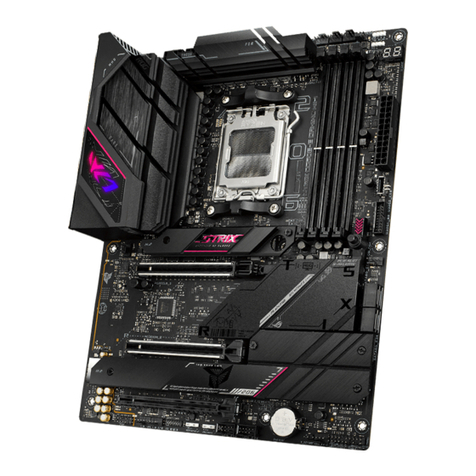
Asus
Asus ROG STRIX B650-E GAMING WIFI quick start guide

Telit Wireless Solutions
Telit Wireless Solutions CHARLIE HW User Guide
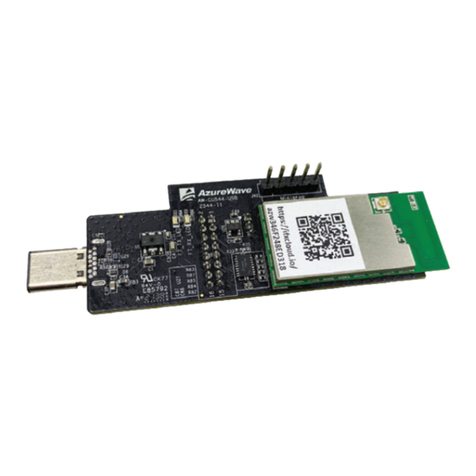
Infineon
Infineon AIROC IFW956810 quick start guide
